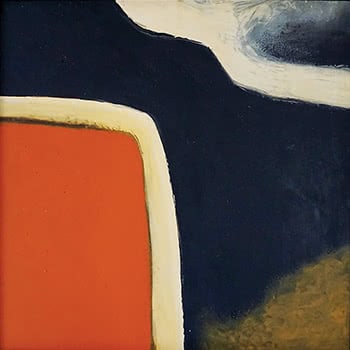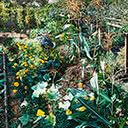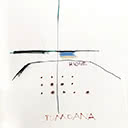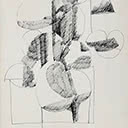Waterfall
30.3 x 30.3 cm
est. $35,000 - 45,000
PROVENANCE
Bill Sutton collection since 1965
Purchased from Globe Theatre, Dunedin 1965
EXHIBITED
Colin McCahon
21 Paintings from the Waterfall Series, Globe Theatre, Dunedin 1965
It is natural to link McCahon's waterfall paintings to Abstract Expressionism: they were realised at a time when, having returned from the United States, the artist sought to incorporate the philosophy and formal disciplines of this tradition into his practice.
For this reason, it is easy to look at a painting such as Waterfall, 1964 and associate it with one of Barnett Newman's zip paintings, or with any one of the immersive colour fields produced by those artists. Throughout the crystallisation of our national art history, the linking of McCahon's works to this tradition has become an almost reflexive impulse.
Despite the biographical tidiness of such a narrative, however, the vitality of the artist's connection with the land must not be overlooked.
Although McCahon did indeed adapt the tools and visual language of an overseas tradition, his waterfall paintings are first and foremost reflections on the spiritualism and essence of the New Zealand landscape. Their sense of timelessness and monumentality comes organically from McCahon's baptism of New Zealand land by water.
In this painting Waterfall, 1964, McCahon converts the violent force of falling water into an inert, infinite state of meditation. The burnt orange rock in the painting's foreground functions as both a natural signifier and a vital form of painted physicality, facilitating a dialogue between form, colour, and the land.





